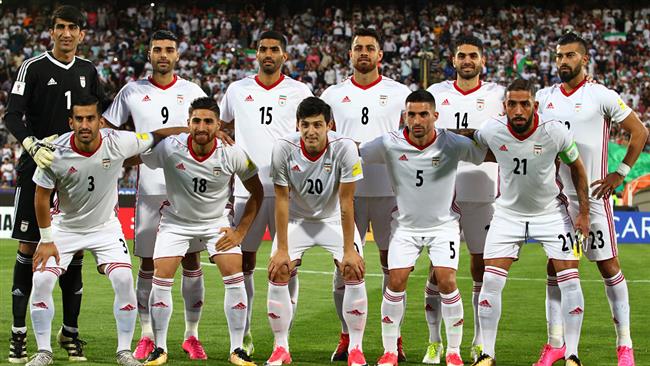From the Gates of Hell to the Alignment of the Stars?

Persianfootball.com – KAZAN, You only have to be a Team Melli fan for a few months, to say with certainty that we can never catch a break in, or for major tournaments. From that dreaded red card to Pouladi in the last Asian Cup to the missed penalty call in the Argentina match in 2014 and the late Messi strike, we seem to repel lady luck.
This was proven again a few months ago when the nostalgia of qualifying for back-to-back world cups for the first time, was cut short with the final draw for the 2018 tournament and being placed in the same Group with Spain, Portugal and Morocco.
Team Melli had a roughly 12% chance of being grouped with the reigning European champions but to have the winners of the 2012 edition and the 2010 World Cup and the 2018 African Nations Champion in the same group was to say the least, a bit unlucky.
In its 4 previous World Cup appearances, Team Melli has been grouped with one of the eventual finalists twice, in 1978 (50% chance) and 2014 (25% chance) and with one of the semi-finalists in 2006 (50% chance).
The 1998 World Cup was the only time Iran was in a group with no team reaching the semi-finals – not surprisingly with our best ever showing at the World Cup – so the odds have most certainly been stacked against us in past tournaments.
But there is no reason to fret Team Melli fans, because lady luck already has some fascinating facts and figures in our favour for this tournament and positivity will go a long way… This is the first World Cup to be hosted by a recent historical neighbour of Iran (Soviet Union as recently as 1991) and geographic and historical proximity are in Iran’s favour.
It is also the first World Cup where Team Melli has a player based in one of the venues for its matches with Azmoun and the Kazan Arena. Although 2006 was the first and only other time that we had players based in a host nation, none of them played on their home turf during the tournament.
But the most interesting and odd defying fact now is that this is the first time in modern World Cup history where three “Neighbouring Countries” – where one nation has land borders with the other two and none of them is the host of the tournament – have been placed in the same group.
Why is this advantageous to us? Because Neighbouring Countries are more likely to put their focus and energy on their geographic, historical and cultural rivals than the odd man out from across the pond and our opponents’ build-up and list of friendlies is a testament to that.
This was also the case in 1962 – the only other World Cup with Neighbouring Countries in the same group – where Chile managed to knock out Switzerland and Italy and advance from the group stage with West Germany.
The infamous “Battle of Santiago”, albeit not pretty, was the perfect example of the odd man out phenomenon with the Chileans turning their geographic and cultural oddity in the group into an advantage and reaching the second round for the first time in their history, albeit at home.
While it was possible in the olden days to have 3 or even 4 teams from the same continent in one group, this has become a near impossibility with the new extended format in place since 1998 where no more than two European teams can be drawn into the same group and instead, 3 or even 4 confederations are represented by each group.
So how did the stars align this time for such a nearly impossible occurrence?! There are a handful of trans-confederation countries in the world – countries with land borders with at least one other confederation – that can produce the Neighbouring Countries phenomenon.
Nearly all of them, with the exception of Egypt and Palestine, are members of UEFA because that’s the only confederation that can have two teams in the same group. Egypt (CAF) and Palestine (AFC) are exceptions because they can theoretically be placed in the same group with Israel (UEFA) if they all qualified.
Other than those three countries, Russia and Turkey are obvious inclusions, as are our two other neighbours Armenia and Azerbaijan and of course ex-AFC member Kazakhstan who joined UEFA in 2002. But what many may not know is that Spain is also a member of this exclusive club, compliments of its African enclaves, Ceuta and Melilla.
Yet, despite Spain having qualified for every World Cup since 1998, Russia three times and Turkey once, neighbouring countries that may be drawn into the same group have rarely qualified for the World Cup, let alone actually be drawn into the same group.
In fact, until now, 1998 was the only other tournament where neighbouring countries (Spain, Morocco and France) qualified but not even two of them ended up in the same group. The odds of 3 neighbouring countries qualifying and subsequently being drawn into the same group are astronomically low.
Thus, having started its campaign at the Gates of Hell, Team Melli is now supported by a serious alignment of the stars, in the Group of Defying Odds. And if luck is indeed a lady with good taste, she must already be singing “do do do, do do, do, Iran” after seeing the pictures of the best looking team of the tournament arriving in Russia!




